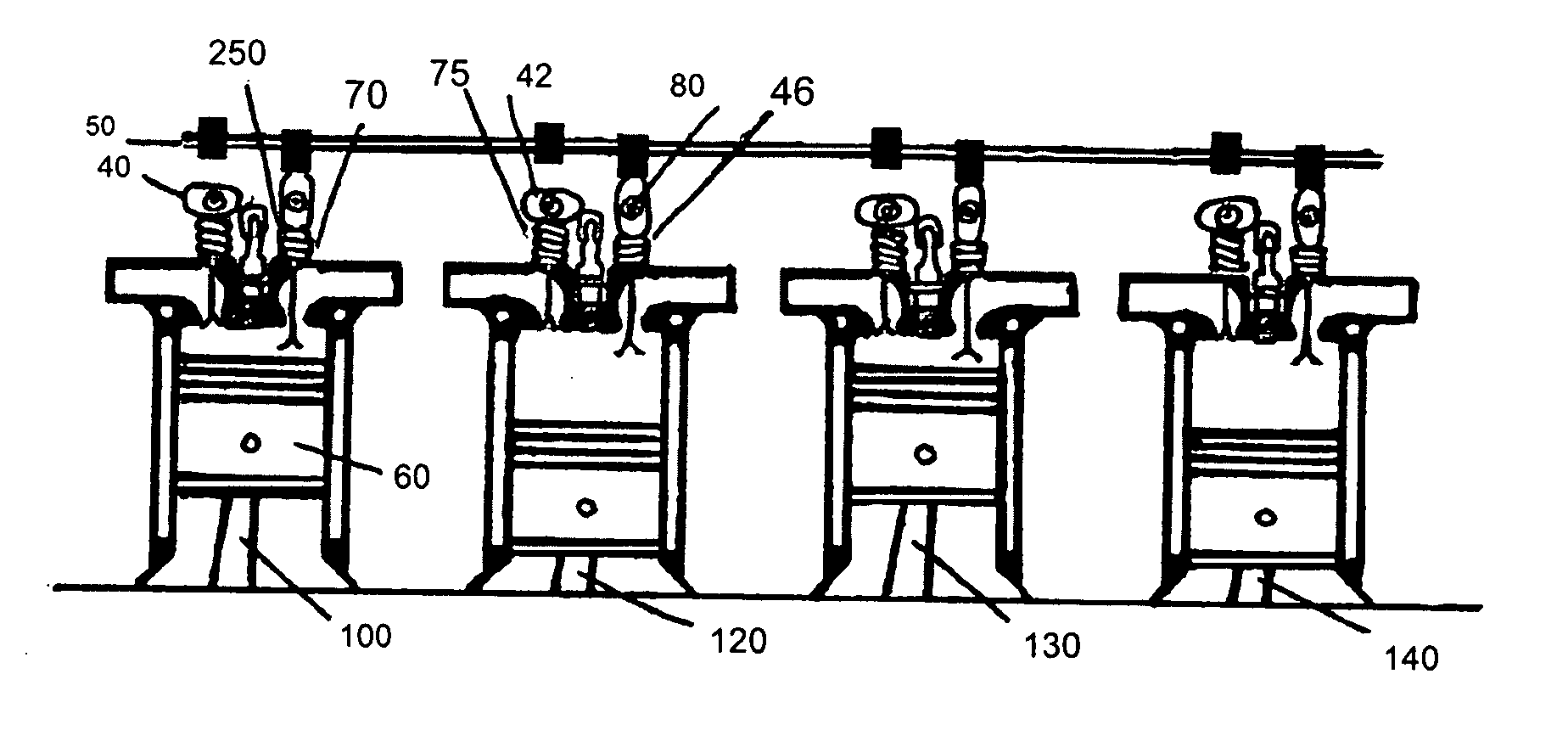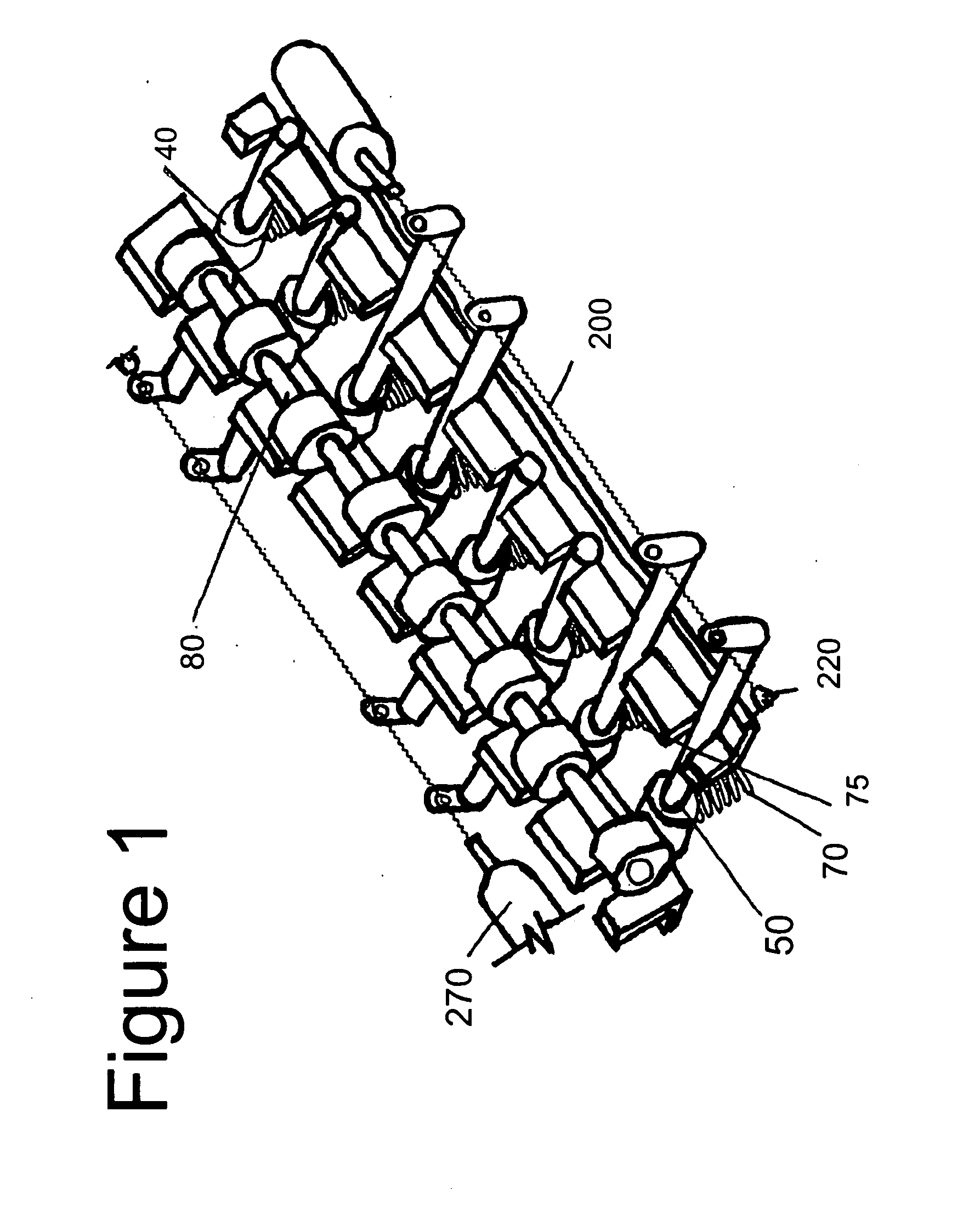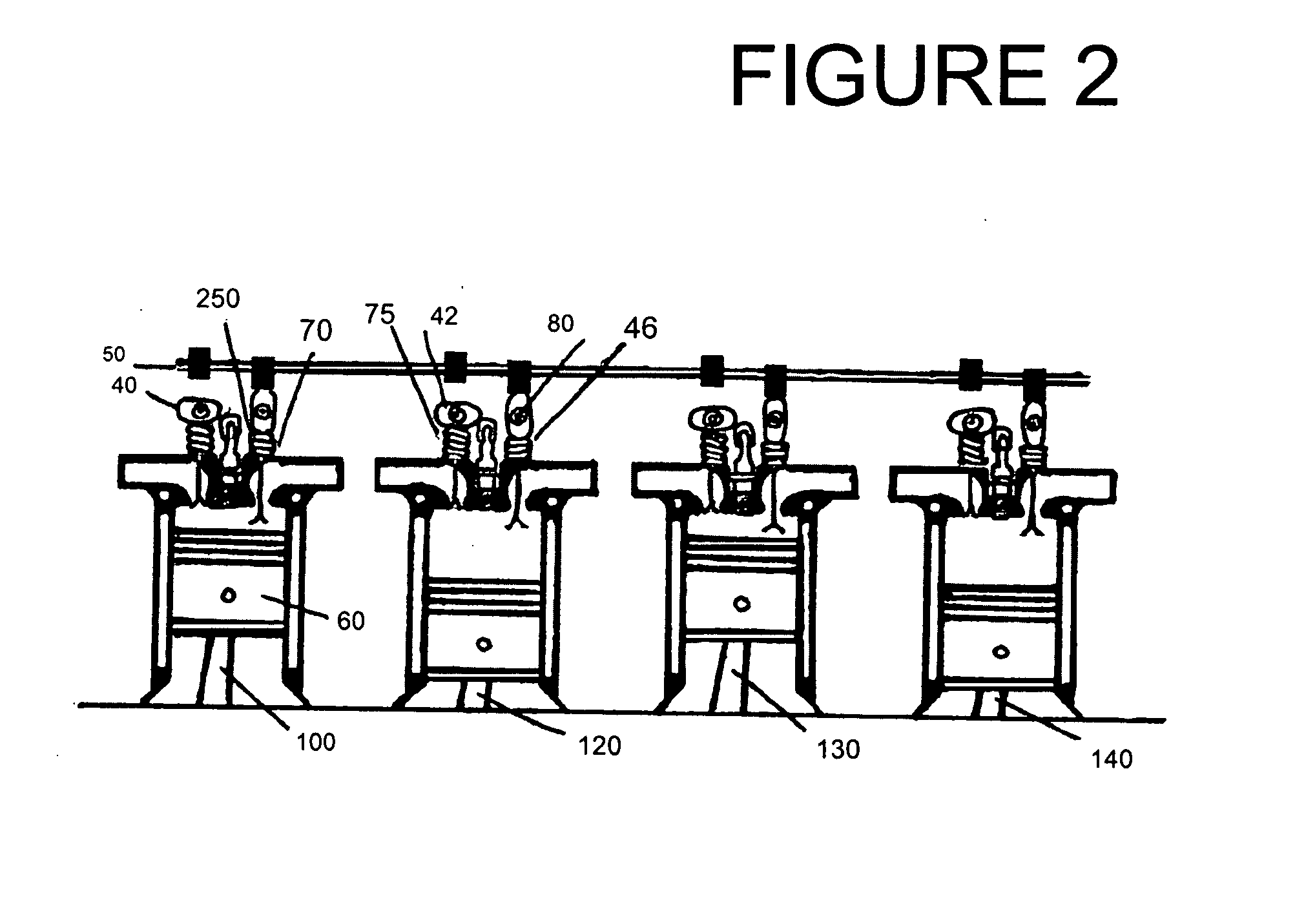Engine System
a technology of engine and system, applied in the direction of valve details, valve arrangement, valve drive, etc., can solve the problems of fueling an automobile costing money, gas consumption at maximum power, and affecting costs, and achieve the effect of convenient opening
- Summary
- Abstract
- Description
- Claims
- Application Information
AI Technical Summary
Benefits of technology
Problems solved by technology
Method used
Image
Examples
Embodiment Construction
[0022]I. The Parts
[0023]In FIG. 1, we see the elliptical apparatus (40) and function of the solenoids (220) attached to a typical four-cylinder engine. The size is structured so that it fits as a component of a transversal rotational axial bar (50) on top each piston (60).
[0024]In FIG. 2, we see the various elements of the present invention as it would look under typical 4-cylinder engine conditions, including the placement of the elliptical apparatuses (40) in horizontal (42) and vertical (46) positions between the respective intake valves (70) and camshaft (80).
[0025]In FIG. 3, we see an additional embodiment of the present invention in relation to how it applies to fuel injection engines. Fuel injection engines contain some different physical elements and placements compared to carburetor engines. This includes the fuel injection valves (350), high-pressure injector (320), pressurized fuel valve (310), low-pressure injector (360), high-pressure pump (330) and the fuel tank (340)....
PUM
 Login to View More
Login to View More Abstract
Description
Claims
Application Information
 Login to View More
Login to View More - R&D
- Intellectual Property
- Life Sciences
- Materials
- Tech Scout
- Unparalleled Data Quality
- Higher Quality Content
- 60% Fewer Hallucinations
Browse by: Latest US Patents, China's latest patents, Technical Efficacy Thesaurus, Application Domain, Technology Topic, Popular Technical Reports.
© 2025 PatSnap. All rights reserved.Legal|Privacy policy|Modern Slavery Act Transparency Statement|Sitemap|About US| Contact US: help@patsnap.com



